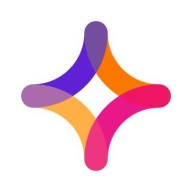

Jitterbit Harmony and Stonebranch are leading integration and automation platforms. Jitterbit Harmony has the upper hand in integration and API management, while Stonebranch is superior in automation and workload scheduling.
Features: Jitterbit Harmony offers numerous pre-built templates, advanced API management, and real-time integration capabilities. Stonebranch focuses on workload automation, cross-platform scheduling, and unified monitoring.
Room for Improvement: Jitterbit Harmony could enhance workload scheduling, improve automation features, and expand cross-platform support. Stonebranch may benefit from simplifying its deployment process, reducing initial setup costs, and increasing integration capabilities.
Ease of Deployment and Customer Service: Jitterbit Harmony is known for rapid deployment and exceptional customer support, simplifying the integration process. Stonebranch offers a scalable deployment model with strong customer service but requires a more complex setup.
Pricing and ROI: Jitterbit Harmony offers competitive pricing with a focus on cost-effective solutions and quick ROI due to integration efficiency. Stonebranch has a higher initial setup cost justified by its advanced automation features and long-term ROI, making its robust features appealing despite the higher expense.
| Product | Market Share (%) |
|---|---|
| Stonebranch | 4.5% |
| Jitterbit Harmony | 0.3% |
| Other | 95.2% |


| Company Size | Count |
|---|---|
| Small Business | 8 |
| Midsize Enterprise | 3 |
| Large Enterprise | 1 |
| Company Size | Count |
|---|---|
| Small Business | 1 |
| Midsize Enterprise | 5 |
| Large Enterprise | 22 |
Jitterbit Harmony offers an advanced integration platform that simplifies data transformation, helps users quickly connect apps, and automates workflows, streamlining complex business processes efficiently.
Designed to meet the high demands of modern businesses, Jitterbit Harmony enables seamless integration across cloud and on-premise environments. By leveraging its powerful tools and user-friendly design, users can accelerate innovation, reduce operational costs, and enhance productivity. It bridges the gap between traditional and emerging technologies, ensuring organizations can adapt quickly to market changes and remain competitive.
What are the key features of Jitterbit Harmony?Jitterbit Harmony finds its application across numerous industries, from enhancing data integration in the healthcare sector to optimizing supply chain logistics in manufacturing. It supports financial institutions by improving transaction processing and facilitates real-time data connectivity in retail environments, making it a versatile choice for diverse industries looking to innovate rapidly.
Stonebranch automates enterprise-level workload and task scheduling across platforms like Linux, Windows, and mainframe, managing thousands of daily tasks for improved efficiency and visibility.
Stonebranch enables organizations to streamline job scheduling by replacing older systems with a robust solution that automates complex workflows, batch processing, and secure file transfers. Its compatibility with multiple platforms and enhanced visibility aid teams in efficiently managing business processes, database interactions, and IT workflows. Equipped with a Universal Controller and Agent, it provides seamless integration across diverse systems, empowering users with greater control over their tasks. While it fosters digital transformation, there are opportunities for enhancements in areas like graphical workflow overviews and API functionality.
What features does Stonebranch offer?Organizations in industries such as finance and healthcare implement Stonebranch for its ability to automate complex processes, manage mainframe and distributed environments, and securely transfer sensitive data. Its platform-agnostic nature caters to the demanding needs of these industries, providing a reliable backbone for essential operations.
We monitor all Workload Automation reviews to prevent fraudulent reviews and keep review quality high. We do not post reviews by company employees or direct competitors. We validate each review for authenticity via cross-reference with LinkedIn, and personal follow-up with the reviewer when necessary.